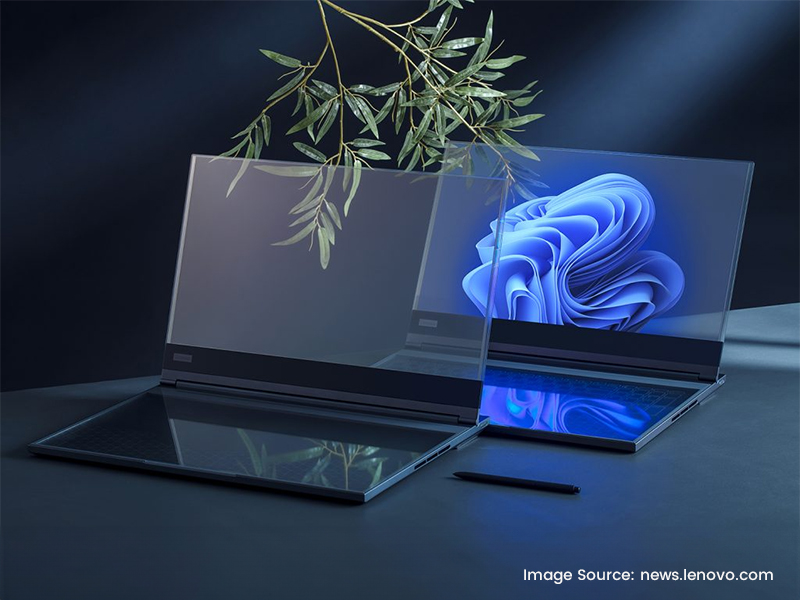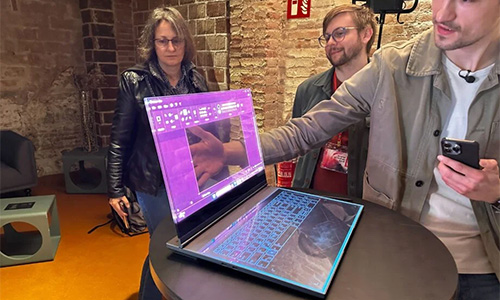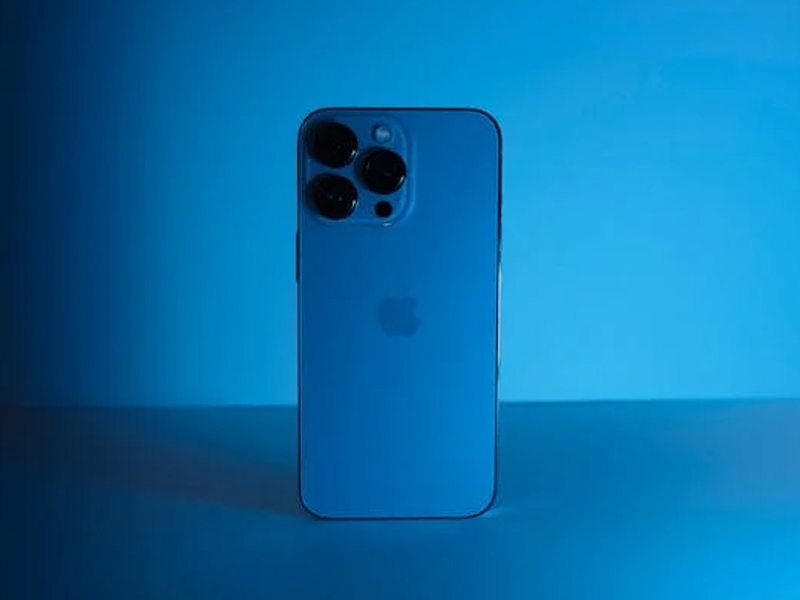Lenovo ThinkBook Transparent Display: A Glimpse into the Future of Computing

Tech Gadgets
A Display Unlike Any Other
The centerpiece of the ThinkBook Transparent Display is its 17.3-inch Micro-LED display. Micro-LED technology uses microscopic LEDs to create images, offering several advantages over traditional displays:Adjustable Transparency
Unlike completely transparent displays showcased in TVs, the ThinkBook’s transparency can be adjusted. This allows users to switch between a fully functional laptop screen and a partially transparent view of the physical world below. Imagine sketching a design on a piece of paper while simultaneously referencing a digital image on the screen – all on the same surface.High Brightness and Color Accuracy
Micro-LEDs deliver exceptional brightness (up to 1000 nits) and color accuracy, ensuring a clear and vibrant display even in brightly lit environments. This is crucial for creative professionals who rely on accurate color reproduction.Borderless Design
The ThinkBook boasts a sleek, borderless design that further emphasizes the transparency effect. The display appears to float on the chassis, creating a futuristic and minimalist aesthetic.A Reimagined User Experience
 The ThinkBook’s transparent display reimagines how we interact with laptops. Here are some of the innovative features showcased in the concept:
The ThinkBook’s transparent display reimagines how we interact with laptops. Here are some of the innovative features showcased in the concept:
Projected Keyboard
Instead of physical keys, the ThinkBook utilizes a transparent base that projects a virtual keyboard onto its surface. This allows the keyboard to disappear when not in use, maximizing the transparent effect and minimizing desk clutter. Users accustomed to traditional keyboards may need some adjustment, but the projected keyboard offers the potential for customization and ergonomic benefits.Multifunctionality
The detachable base can also function as a drawing tablet when used with a compatible stylus. This opens doors for creative professionals who can seamlessly blend digital and physical elements in their workflow. Imagine sketching an initial design on paper and then refining it directly on the transparent surface using the digital drawing tools.AI-powered Collaboration
Lenovo envisions the ThinkBook as a tool for enhanced collaboration, particularly when working with Augmented Reality (AR). The transparent display could overlay digital information onto physical objects, creating a shared workspace for designers, architects, and engineers. Imagine architects manipulating 3D models of a building on top of a physical blueprint, allowing for real-time collaboration and decision-making.The Potential Impact
The ThinkBook Transparent Display is more than just a futuristic concept; it has the potential to revolutionize various industries. Here are some ways transparent display technology could impact our world:Education
Imagine students manipulating virtual objects in science lessons or architects visualizing 3D models on top of blueprints. Transparent displays could create a more interactive and engaging learning environment, fostering a deeper understanding of complex concepts.Retail
Transparent displays could showcase product information overlaid on physical merchandise, creating an interactive shopping experience. Customers could access detailed specifications, reviews, and even virtual try-on features with just a glance. This would personalize the shopping experience and potentially increase sales.Healthcare
Medical professionals could potentially utilize transparent displays for enhanced surgical procedures or patient consultations. Imagine surgeons having access to real-time patient data or X-rays overlaid on their field of view during an operation. This could lead to more precise procedures and improved patient outcomes.Challenges and the Road Ahead
While the ThinkBook Transparent Display is a significant step forward, there are still challenges to overcome before transparent display technology becomes mainstream. Here are some key considerations:Battery Life
Transparent displays likely require more power than traditional displays due to the additional lighting needed for the transparent effect. Optimizing battery life will be crucial for ensuring the ThinkBook remains portable and practical.Content Optimization
Current software and applications are not designed for transparent displays. User interfaces and content will need to be adapted to take advantage of the unique capabilities of this technology.Cost and Availability
As a cutting-edge technology, transparent displays are likely to be expensive in the initial stages. Making them more affordable and accessible will be essential for widespread adoption. The Lenovo ThinkBook Transparent Display is a glimpse into a future where the boundaries between physical and digital worlds become increasingly blurred. It represents a significant leap forward in display technology, offering exciting possibilities for creativity, collaboration, and a more intuitive user experience. While there are challenges to overcome, the potential benefits of transparent displays are undeniable. As the technology matures and becomes more affordable, we can expect to see transparent displays integrated into a wider range of devices, from laptops and tablets to AR glasses and smart surfaces. This could usher in a new era of computing, where the digital world seamlessly blends with our physical surroundings, transforming the way we work, learn, and interact with information.Frequently Asked Questions?

01
Mobile Technology
iPhone Repair Just Got Easier: No More Disabling Find My Before Service
May 4, 2024

01
Tech news
Tech for a Greener You: Apps to Empower Your Sustainable Lifestyle
May 3, 2024

01
Internet of Things
Tesla’s Robotaxi: A Driverless Future on the Autobahn (or Freeway)?
May 2, 2024

01
Tech Gadgets
Don’t Trash Your Tech! Combating E-waste & Embracing Responsible Gadget Disposal
Apr 30, 2024
SUSBSCRIBE TO OUR NEWSLETTER
Join our subscribers list to get the latest news and special offers.
iPhone Repair Just Got Easier: No More Disabling Find My Before Service
Tech for a Greener You: Apps to Empower Your Sustainable Lifestyle
Tesla’s Robotaxi: A Driverless Future on the Autobahn (or Freeway)?
Meta Llama 3: Jack of All Trades, Master of None (But Still Free!)